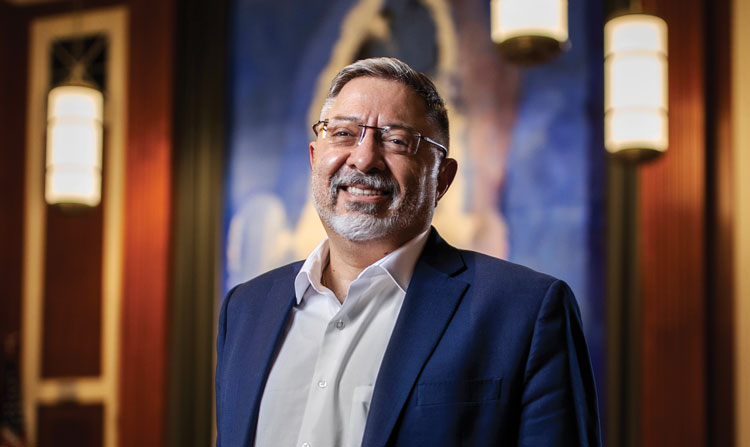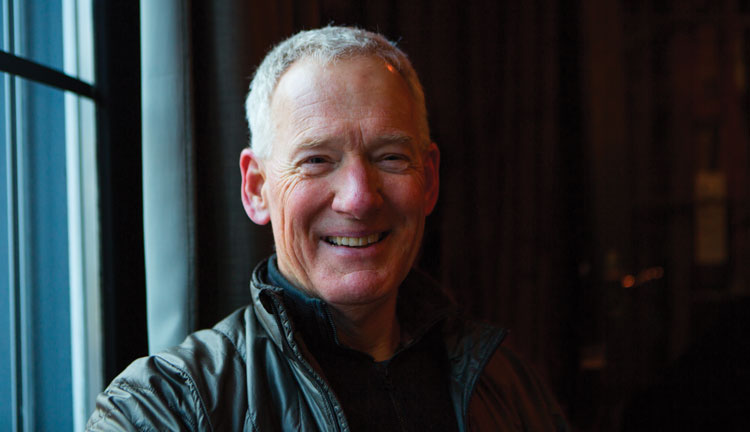By Lyle Moran

Utah Supreme Court Justice Constandinos “Deno” Himonas: “It is one thing to be a visionary, it is another thing to be a working visionary.” Photo by Benjamin Hager/ABA Journal
Utah Supreme Court Justice Constandinos “Deno” Himonas is fond of saying that trying to tackle the growing justice gap with the same strategies is “Einstein’s definition of insanity.”
One key reason he says that is because of the size of the problem. The Legal Services Corp. reported in 2017 that low-income Americans receive inadequate or no professional legal help for 86% of the civil legal problems they face annually.
So when Himonas heard economist Gillian Hadfield speak at a May 2018 conference about how modernizing the way the legal industry is regulated could increase access to justice, he was immediately intrigued. So was litigator John Lund, the then-president of the Utah State Bar, who says he was struck by the idea that overhauling the traditional regulatory structure could open up the legal market to new providers and much-needed innovation.
Shortly thereafter, Himonas and Lund helped convince the state supreme court and state bar, respectively, that regulatory reforms were worth seriously considering. Their collective leadership, including as co-chairs of two different committees in the years since, paved the way for the Utah Supreme Court’s unanimous vote in August to adopt a package of sweeping regulatory changes. The reforms, which permit nontraditional legal services providers to test new ways of serving consumers, have propelled Utah to the front of the pack of the growing number of U.S. jurisdictions implementing or considering similar measures.
“Utah will be the first state in the nation to lay the foundation for a truly accessible and affordable consumer-oriented legal services system,” the supreme court said in an August press release announcing the approved reforms.
The groundwork for the changes was laid by a working group the Utah Supreme Court created in late 2018. As part of their work as co-chairs, Himonas and Lund say they endeavored to ensure the group included members with a wide array of perspectives and areas of knowledge. As a result, the panel featured a variety of outside experts as well as members with ties to the bar and the court system.
After months of intensive work, the group issued a report in August 2019 that concluded “the time for regulatory reform is now.”
The centerpiece of the group’s recommendations was the proposed creation of a regulatory sandbox in which nontraditional legal services providers—including those with nonlawyer owners or investors—could provide legal assistance without the fear of being accused of the unauthorized practice of law.
Opponents of relaxing traditional prohibitions against nonlawyer ownership have argued that it could hurt the profession by putting profits before the quality of representation, ultimately harming the public. However, proponents of reform contend that relaxing UPL regulations is necessary to allow innovation to occur. In Utah, the working group argued that the sandbox approach would generate data to inform whether opening up the legal marketplace to nonlawyers and new services would serve the public well in the long term.

Photo of John Lund by Harry Caston Photos
Lund, 61, credits Himonas with being a “force of nature” who not only helped the working group develop its proposals but also played a key role in writing the panel’s report. “He is an amazing guy when you want to get things done, and he has got a lot of passion.”
Himonas praises Lund, a Parsons Behle & Latimer shareholder, for his consistent support for exploring comprehensive regulatory changes and for volunteering hundreds of hours of his time.
“It is one thing to be a visionary; it is another thing to be a working visionary,” says Himonas, 56.
Both Himonas and Lund acknowledge receiving criticism for their support of regulatory reforms that are unpopular in segments of the broader legal community. But they say their confidence that the measures will eventually produce greater access to justice, as well as benefit the profession as a whole, has kept them plowing ahead.
“What I’m totally devoted to is improving access to justice and really giving the law back to the people and giving them the tools so they can access their law,” Himonas says.
Himonas and the court have the final say on whether the applications for entry to the sandbox are granted, but the court also created a new Office of Legal Services Innovation to oversee the program. Lund was named chair of the innovation office.
“It’s an opportunity to be at the front end of just some wonderful and fascinating discussions about where our profession is going,” he says of the role.
Read more: 2021 Legal Rebels: Meet 10 legal professionals who are courting change